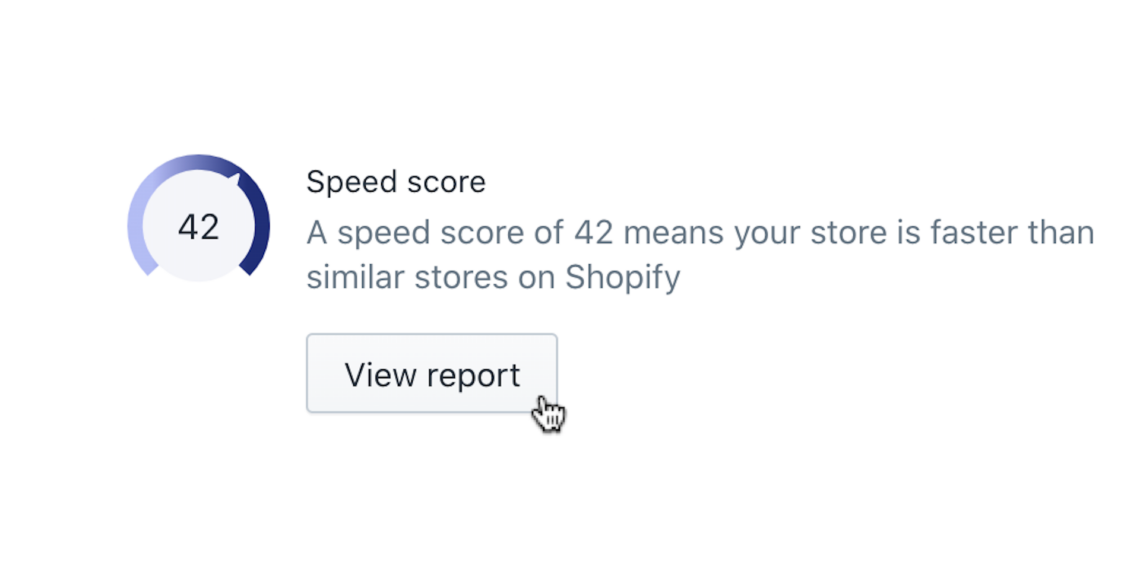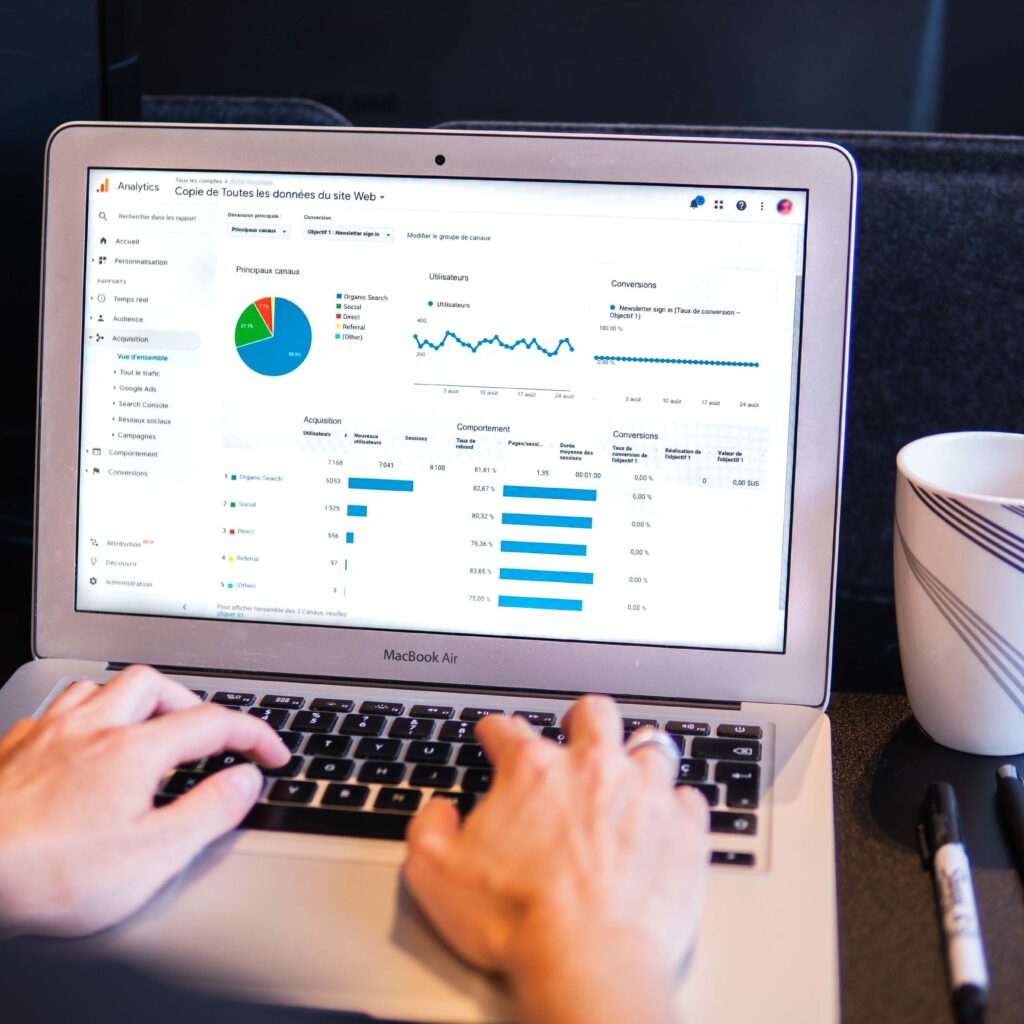Shopify’s Store Speed Report: A Tool For Your E-Commerce Store

Shopify’s Store Speed Report is valuable for anyone using the Shopify platform in e-commerce. Understanding the issues that can make or break a purchase is critical to growing your brand and creating further sales.
With that in mind, we have broken down the Speed Report for you to know exactly how to use it and make sure your e-commerce platform is as fast as possible.
What Is Store Speed?
So what is store speed, and how is it measured? At a basic level, store speed is the time it takes the different pages of your online store to load. Depending on the layout of your Shopify store, you could have several features, such as themed code, apps, and images.
Each of these aspects of your online store affects your Store Speed Report and overall store speed, which always remains important – for yourself and your end-user.
How Important Is Store Speed To Google?
When looking at your Shopify store speed and Store Speed Report, it’s important to realize how similar it can be to measuring the speed of your website.
Due to the impact on user experience, Google considers website speed to be a critical factor in search engine ranking.
If a site takes a while to fully-load, Google will attribute a low score to the overall user experience. With programs such as Google’s page speed insights tool, site owners can get a relative score for their site’s speed.
If your site is slow for any number of reasons, it allows the owner to see the main issues and deal with them accordingly. With the importance of speed in the eyes of Google, site owners must be able to see issues and easily correct them quickly before any penalties are put in place.
In a nutshell, this is exactly what the Shopify Store Speed Report is for, giving a metric to the store owners to perform better in the e-commerce environment.
Shopify’s Store Speed Report

With all things considered, Shopify’s Store Speed Report is a no-brainer for those looking to gain further insight into the performance of their e-commerce store. Being able to discern what is affecting your customer’s experience and using that to increase positive performance is a great step in boosting the success of your online store.
But how does the Shopify Site Speed Report work?
How Does The Store Speed Report Work?
The site speed report, according to Shopify, uses a combination of sources to ensure that your site’s score is determined from the best data available. Powered by Google Lighthouse, the Store Speed Report measures a variety of performance metrics to determine how fast your website feels to most visitors. Using a 100-point scale, a number will be generated which represents your general ranking in terms of the Speed Report.
It is important to remember that this number does change and will fluctuate according to visitor types and interactions with your store. One thing you shouldn’t do is expect to get a perfect score. There are always improvements to make, especially when you’re testing out the user experience of your online store.
What Your Store Speed Report Score Means

If you are using this tool for the first time and get a score that you’re not too happy about, don’t worry. As Shopify puts it:
“All numerical scores are just a way to better understand how you’re performing in the eyes of your customers.”
This is all about understanding how you can improve your online store which will produce better results in the future. That said, if you’re not happy with your score, there are ways in which you can improve it!
How You Can Improve Your Score
So you have your Store Speed Report, and now are ready to start improving your store’s overall performance; what’s next?
Well, something you should keep in mind is that there are some aspects that you as the store owner cannot control. These are things like:
1) Your customer’s device, network, and location
Your customers are coming from different locations and internet connections, using all sorts of devices. This means that your store speed can vary between users making your overall store speed slow down or speed up accordingly. Check out this article on how to best optimize your Shopify store’s loading speed for all users.
2) Shopify Infrastructure
Shopify hosts your store, along with many others, through their host of fast, global servers. Shopify makes sure not to limit your bandwidth, but there are some aspects of the service which can affect your Store Speed Report.
The main aspects of this are your content delivery network (CDN), local browser cache, and server-side page cache. These aspects, especially your CDN, are run using industry-best practices and programs such as Fastly. To learn more information about how Shopify’s infrastructure can affect your Store Speed Report, read this report.
So What Can You Change?
Apps:
When you add apps to your online store, they add code into your store so they can operate on your Shopify Store. Occasionally, code can be removed or reordered to improve your online store’s performance and Store Speed Report. Remember, if you’re not using an app, then you can remove it.
If you’re thinking that an app could be slowing down your store, then here are some options:
- Disable app features you don’t use or remove the app if you don’t need it. There is a balance between online store features and speed.
- Consult the app developer.
- Shopify offers optimization experts that you can contact for further assistance.
Themes:
When you edit or customize themes, this causes the file sizes to increase which can affect your store performance and Store Speed Report negatively. Just like for apps, it’s important to disable theme features you don’t use, as this can slow down your overall store performance and Store Speed Report.
If you think your chosen theme could be slowing your store’s performance start with these steps:
- You can consult the theme developer if you think this could be affecting your store negatively.
- If you use a free theme from Shopify, then you can contact support for guidance.
- If you use a third-party theme, then you can contact your theme developer.
Images and Video:
The larger or more complex the assets, such as large videos or images, the longer it will take for your online store to load. This also means that this can interfere with loading other, more important parts of a page. If users have to wait for large images to load, they might perceive your store to be slow and move on to a competitor.
If you think that images are slowing down your store, then take the following steps:
- Review Shopify’s Image Optimization Guide.
- Keep slideshows of featured images to 2-3 slides, or use one featured image.
- Consult your theme developer for their advice on the best way to use images with their theme.
Complex Code:
You can edit almost all of the code that is used to render your store. There are efficient and inefficient ways of writing code. Doing complex operations repeatedly can increase your render time, which impacts your overall Store Speed Report.
If you’re concerned that your code is not optimized, then you can use the Shopify Theme Inspector for Chrome to identify the lines of code that are slowing down pages in your online store.
While it may seem like many factors go into calculating your Store Speed Report, it’s important to remember how simple it is to start making critical changes now. By understanding which parts of your store can affect site speed and using site speed best practices talked about above, as well as, you’ll be on the right track to boost your score on your next Store Speed Report.
Need help optimizing your current Shopify Store? Navigator specializes in optimizing Shopify stores to perform at their best. Contact Us today for a free consultation.


